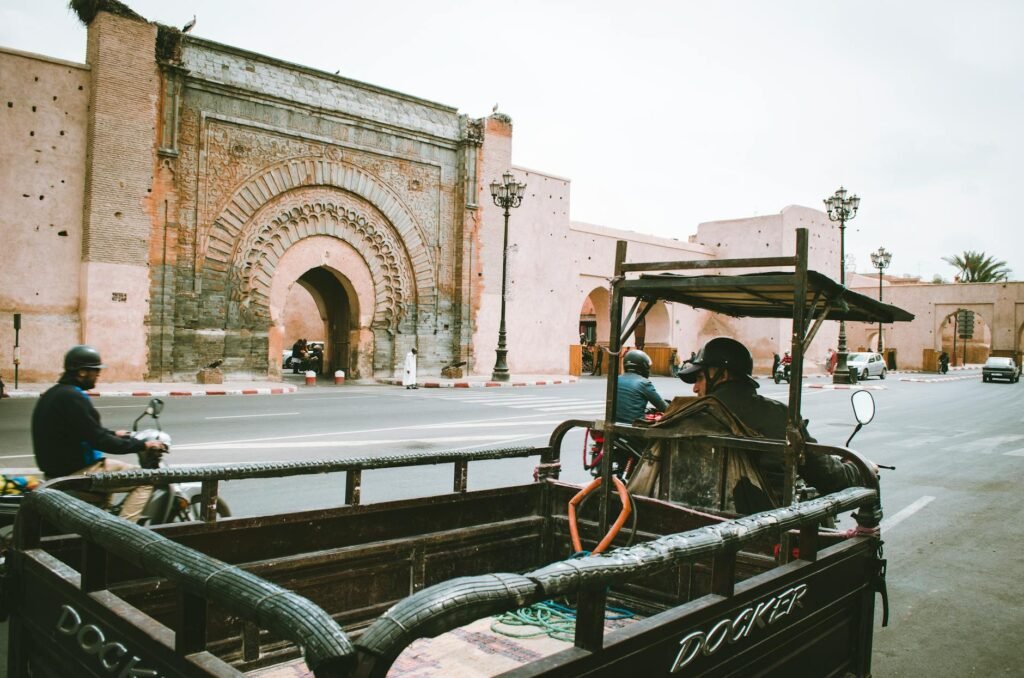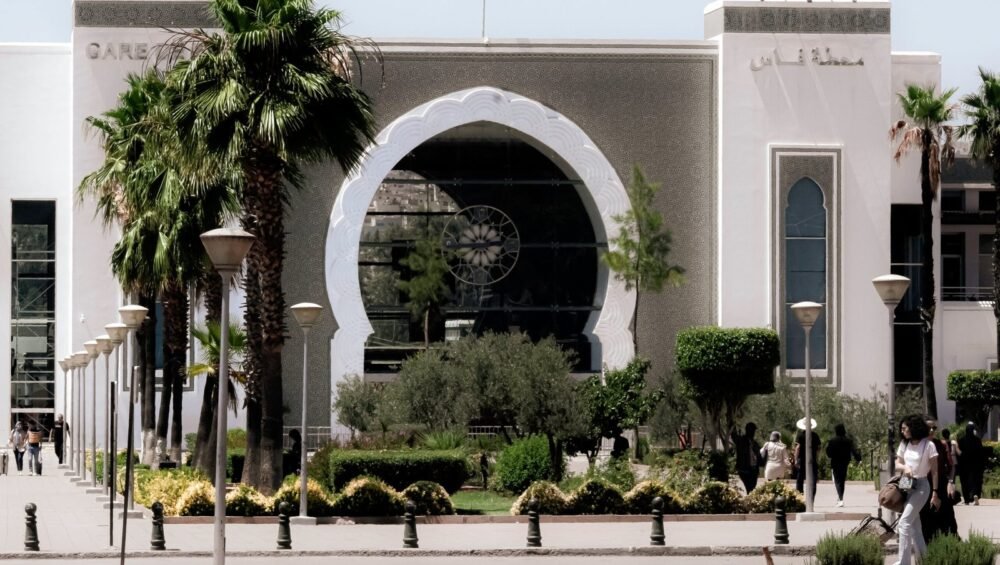10 facts about the Sahara Desert

Morocco is a country full of colors, flavors, and history, where ancient traditions and modern life blend together beautifully. From lively cities like Marrakech to the quiet, rolling sand dunes of the Sahara Desert, Morocco offers a mix of sights and sounds that leave a lasting impression on travelers. This blog will introduce you to some surprising and interesting facts about Morocco, including a closer look at the Sahara Desert, which many people associate with Morocco’s unique charm. You’ll learn about the country’s rich heritage, beautiful landscapes, tasty foods, and much more. Let’s dive in and explore 10 facts about Morocco and the Sahara Desert, shedding light on what makes this North African country a unique and unforgettable place.
Fact 1: Morocco’s Rich Historical Heritage
Morocco’s history is one of the richest and most diverse in the world, shaped by many different cultures over the centuries. Located at a crossroads between Africa, Europe, and the Arab world, Morocco has seen influences from Arab, Berber, African, and European cultures, which together form the unique culture of the country today. When you walk through the cities of Morocco, you’ll find beautiful ancient buildings, busy marketplaces, and people who are deeply proud of their past. Cities like Fez, Meknes, Marrakech, and Rabat each tell a story about Morocco’s history. Fez is known for having the world’s oldest university, Al-Qarawiyyin, where students studied subjects like medicine and mathematics long before modern universities were established. UNESCO has also recognized some of Morocco’s cities as World Heritage Sites, which means they are protected for their special cultural and historical value. By visiting these sites, people can connect with Morocco’s deep past, seeing how the old world meets the new in ways that are rarely seen anywhere else.
Fact 2: The Sahara Desert – A Marvel of Nature
The Sahara Desert is one of the most famous landscapes in Morocco and is known worldwide for its massive sand dunes and mysterious beauty. Covering a large part of North Africa, the Sahara Desert stretches across many countries, but the Moroccan part is especially popular among visitors who want to experience its peaceful yet powerful atmosphere. With vast areas of golden sand, intense heat, and clear starry nights, the Sahara seems like a place from another world. Despite its harsh conditions, the desert is home to unique plants and animals that have adapted to survive in the dry climate. People from around the world come to Morocco to explore the Sahara, and many take guided tours to places like Erg Chebbi, a famous dune area where the sand stretches as far as the eye can see. Here, travelers can ride camels, camp under the stars, and experience the quiet beauty of the desert. The Sahara may seem lifeless at first glance, but it’s actually full of life and stories waiting to be discovered by those willing to explore.
Fact 3: The Medina of Fez – A Living Museum
The city of Fez is home to one of the oldest neighborhoods in the world, known as the Fez Medina, which feels like a living museum where people can still experience life as it was hundreds of years ago. This medina, or old town, is full of narrow, winding streets that form a maze-like pattern. Walking through the medina, you’ll find traditional shops, called souks, where vendors sell everything from fresh spices and handmade pottery to colorful fabrics and leather goods. One of the most interesting parts of the medina is the Al-Qarawiyyin University, which is not only the oldest university in Morocco but also one of the oldest in the world. The Fez Medina is filled with incredible architecture, with buildings designed in a style that is unique to Morocco. Everywhere you look, you’ll see detailed tilework, beautiful fountains, and colorful mosaics that tell stories of the city’s past. The medina has been preserved in such a way that it feels like you’re stepping back in time, yet it’s also a place where people live and work, making it a fascinating blend of history and everyday life.
Fact 4: Moroccan Cuisine – A Flavorful Fusion
Moroccan food is loved by people around the world because of its unique and delicious flavors, which come from a blend of different cultural influences. Moroccan cuisine is famous for dishes like tagine, couscous, and pastilla, each made with special spices that give the food a rich taste. Tagine is a slow-cooked stew that gets its name from the clay pot it’s cooked in, and it can be made with chicken, beef, vegetables, or even fruits like apricots. Couscous, on the other hand, is a grain that’s steamed and served with meat and vegetables. Spices play a big role in Moroccan cooking, with saffron, cumin, ginger, and cinnamon being some of the most commonly used. These spices add not only flavor but also a hint of Morocco’s history, as they were brought over from places like India and the Middle East through ancient trade routes. Moroccan food is often enjoyed with sweet mint tea, which is a symbol of hospitality and friendship in Moroccan culture. Sharing a meal in Morocco is more than just eating; it’s a way of connecting with others and showing respect and care.
Fact 5: Majestic Architecture and Artistry
Morocco’s architecture is known for its beauty and attention to detail, which can be seen in the palaces, mosques, and homes across the country. The buildings are often decorated with intricate tile work, known as zellige, which features colorful patterns made from small, hand-cut tiles. Moroccan architecture often includes large arches, beautiful courtyards, and tall minarets. These features come together to create spaces that are not only functional but also pleasing to the eye and comforting to the soul. One of the most famous examples of Moroccan architecture is the Hassan II Mosque in Casablanca, which is one of the largest mosques in the world and sits right next to the ocean. The mosque has a tall minaret, detailed carvings, and colorful mosaics, making it a true masterpiece of Moroccan design. Moroccan homes, especially riads, also showcase this beautiful artistry, with courtyards that have fountains and rooms with large windows that open up to let in natural light.
Fact 6: The Atlas Mountains – Morocco’s Natural Backbone
The Atlas Mountains are an important natural feature of Morocco, stretching across the country and separating the coastal areas from the desert. These mountains have been part of Morocco for millions of years and are home to unique plants and animals that can’t be found anywhere else. The mountains are also home to Berber villages, where people live in traditional houses and maintain a way of life that has changed very little over time. Many people visit the Atlas Mountains for hiking and to enjoy the fresh mountain air and stunning views. In winter, some parts of the mountains are covered in snow, making them popular spots for skiing and snowboarding. The Atlas Mountains are a place of natural beauty, with forests, rivers, and high peaks, and they hold a special place in the hearts of Moroccans as a symbol of strength and resilience.
Fact 7: Moroccan Hospitality and Cultural Practices
Moroccan people are known for their warmth and hospitality, often welcoming guests into their homes with tea and delicious snacks. Hospitality is an important part of Moroccan culture, and Moroccans take pride in making visitors feel comfortable and at home. One common practice is the Moroccan tea ceremony, where green tea is mixed with fresh mint leaves and sugar and served in small glasses. Sharing tea is a way of showing friendship and respect, and it is often done in a very formal and beautiful way, with the tea being poured from a high height to create a frothy top. Moroccans also have strong family values, and family gatherings are common, especially during important holidays and festivals.
Fact 8: The Influence of Islam in Moroccan Life
Islam is the main religion in Morocco and plays a central role in the lives of Moroccans. The influence of Islam can be seen in everything from the country’s architecture to its daily customs. Moroccans celebrate Islamic holidays such as Ramadan, a month of fasting from sunrise to sunset, and Eid, which marks the end of Ramadan and is celebrated with special prayers, family gatherings, and feasts. The country’s mosques are beautiful places of worship, with calligraphy and design elements that reflect Islamic art. This influence creates a sense of unity and purpose, with Islamic values and traditions woven into the fabric of Moroccan society.
Fact 9: The Moroccan Coastline – Beaches and Port Cities
Morocco’s coastline stretches over 1,800 miles along both the Atlantic Ocean and the Mediterranean Sea, offering a variety of beautiful beaches, charming port cities, and vibrant fishing villages. The Atlantic coast is home to cities like Casablanca, Rabat, and Agadir, each with its unique attractions and appeal. Casablanca is Morocco’s largest city and economic hub, where modern buildings stand alongside historic mosques and old marketplaces. Agadir, with its warm climate and sandy beaches, is popular with both tourists and locals who enjoy its resorts, seafood restaurants, and relaxed atmosphere. Meanwhile, Essaouira is a smaller coastal town known for its old fortress walls, traditional fishing boats, and lively markets. Walking through Essaouira feels like stepping back in time, especially in its old medina, where artists, musicians, and craftsmen fill the streets with their energy. Morocco’s Mediterranean coast, where cities like Tangier are located, has its own special charm, with green hills and clear blue waters that make it perfect for swimming, sailing, and other water activities. Tangier has a rich history of blending African, Arab, and European influences and has long been a meeting place for people from different cultures. The Moroccan coastline offers something for everyone, whether you’re looking for a quiet beach, an exciting surf spot, or a historic port city.
Fact 10: Morocco’s Growing Tourism and Global Appeal
Tourism has become a major part of Morocco’s economy, drawing millions of visitors each year who come to explore its vibrant cities, diverse landscapes, and unique culture. One reason for this growing popularity is Morocco’s ability to offer a wide range of experiences to travelers with different interests. For those looking for adventure, the country offers thrilling activities like desert trekking, camel rides in the Sahara, and hiking in the Atlas Mountains. Many people are also attracted to Morocco’s rich culture, which can be seen in its colorful markets, traditional music, and unique art forms. Marrakech, known as the “Red City,” is particularly popular, with its lively atmosphere, historic palaces, and world-famous souks where visitors can shop for handmade crafts, jewelry, spices, and much more. Another factor contributing to Morocco’s appeal is its commitment to sustainable tourism, especially in areas like the Sahara Desert. Here, eco-friendly camps allow travelers to experience the desert while minimizing their impact on the environment. These camps are designed to be as comfortable as possible while respecting the delicate desert ecosystem. Morocco’s tourism industry has also benefited from international exposure, as the country has been featured in many movies, TV shows, and travel programs. Through these portrayals, people around the world get a glimpse of Morocco’s beauty and culture, making them eager to experience it in person. Whether you’re interested in history, nature, or simply relaxing in a beautiful setting, Morocco offers something special for every visitor.
10 facts about Morocco
10 facts about Morocco, Morocco is a country that captures the imagination with its mix of ancient history, breathtaking landscapes, and vibrant culture. From the stunning beauty of the Sahara Desert to the historical wonders of cities like Fez and Marrakech, every part of Morocco tells a story. This blog has explored ten unique facts about Morocco, covering everything from its rich heritage and architecture to its warm hospitality and flavorful cuisine. We’ve also looked at the Sahara Desert, one of Morocco’s most iconic landscapes, and learned about its unique climate, fascinating history, and the ways in which it continues to draw travelers from around the world. Morocco’s charm lies not only in its famous attractions but also in the warmth and hospitality of its people, who take pride in welcoming visitors and sharing their culture. Whether you’re planning a trip to Morocco or simply curious about this North African gem, we hope these ten facts have given you a deeper appreciation for what makes Morocco so special. From its bustling cities to its quiet deserts, Morocco is a place that offers endless opportunities for adventure, relaxation, and cultural discovery. If you ever get the chance to visit Morocco, try our best tour agency for unforgettable journey, prepare to be captivated by a land that is as enchanting as it is unforgettable.



